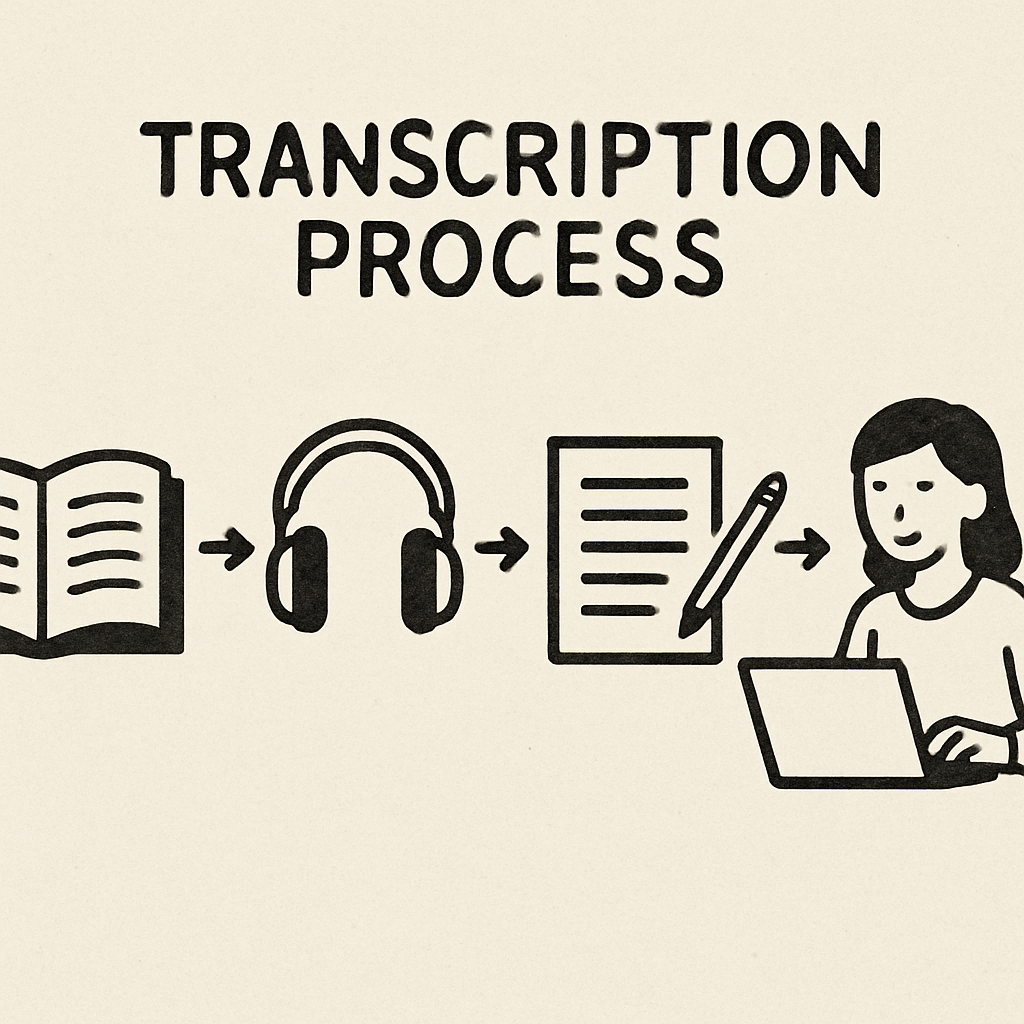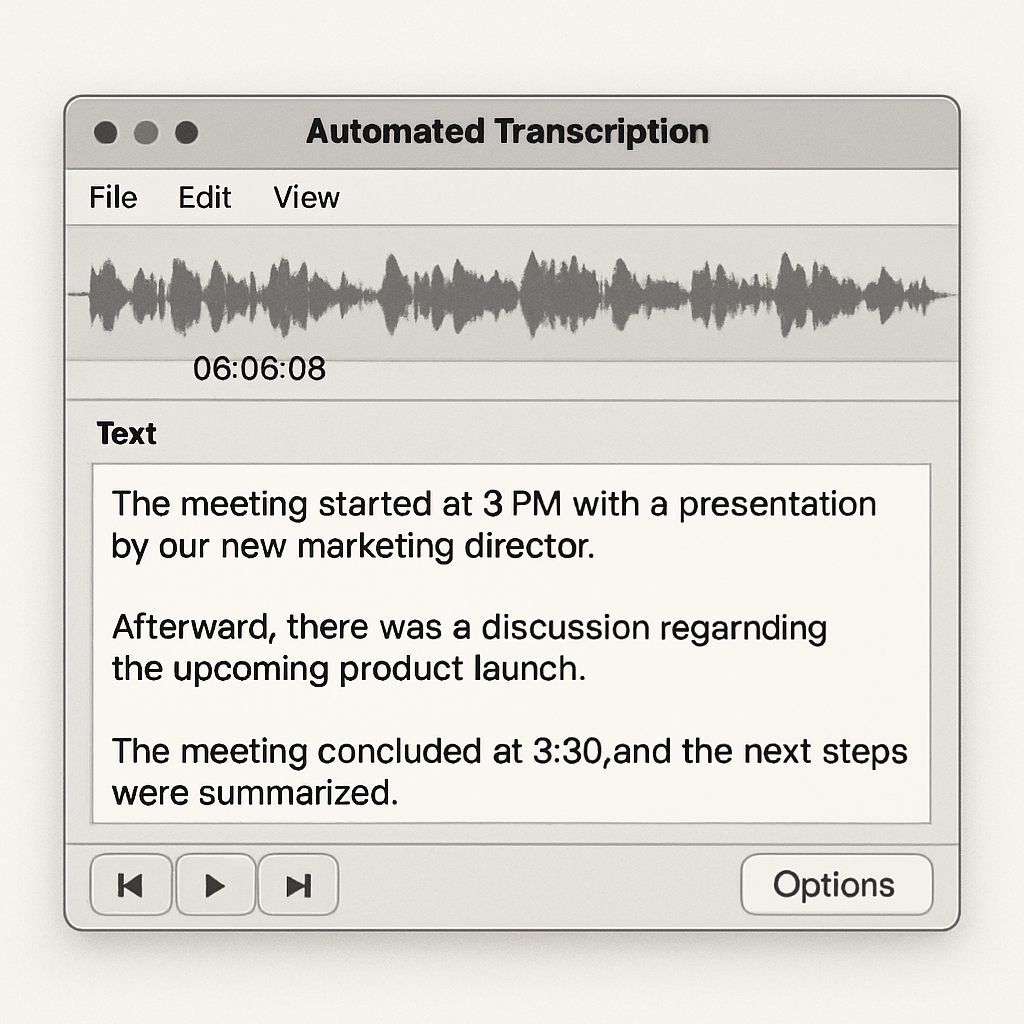When it comes to transcription, understanding the different methods available is crucial. Whether you’re transcribing an interview, a lecture, or a podcast, choosing the right method can save you time and improve accuracy. In this article, we’ll explore various transcription methods, their advantages and disadvantages, and help you determine which one fits your needs.

The Importance of Transcription
In today’s fast-paced world, transcription is more important than ever. It allows for the documentation of verbal communications, making them accessible to a wider audience. For businesses, it means meetings and conferences can be recorded and reviewed at a later date, ensuring no detail is lost.
Fields Utilizing Transcription
Transcription is widely used in fields such as legal, medical, and media. In the legal sector, transcription is essential for court proceedings and depositions. In medicine, it helps in maintaining accurate patient records. Media professionals use transcription for interviews and show scripts, ensuring content is preserved accurately.
The Evolution of Transcription
Over the years, transcription methods have evolved significantly. From manual typewriters to sophisticated AI-powered software, the tools available have transformed how transcription is performed. Understanding these advancements can help in selecting the most appropriate method for your needs.
Manual Transcription Methods
Manual transcription remains a popular choice for many due to its reliability and precision. This method involves human transcriptionists who listen to audio and type out what they hear, ensuring a high level of accuracy.
Human Transcription Services
Human transcription services are renowned for their meticulous attention to detail. Transcribers can pick up on nuances, accents, and context that automated tools might miss, making them ideal for complex transcription tasks.
Pros:
- High Accuracy: Human transcribers excel in understanding context, accents, and nuances, providing precise transcriptions.
- Quality Control: With humans, there’s an inherent ability to edit and proofread the text, ensuring it’s error-free and polished.
Cons:
- Time-Consuming: Manual transcription is labor-intensive, often taking longer to complete than automated methods.
- Costly: Hiring professional transcribers can be expensive, particularly for large volumes of work, which may not be feasible for all budgets.
DIY Transcription
For those looking to cut costs, DIY transcription is an option. It allows individuals to transcribe manually, utilizing software that can slow down audio playback to facilitate easier transcription.
Pros:
- Cost-Effective: Bypassing external services saves money, making it a budget-friendly option.
- Control: Undertaking transcription yourself ensures the final output meets your standards and expectations.
Cons:
- Time-Intensive: DIY transcription demands a significant investment of time and effort, which can be daunting for lengthy audio files.
- Skill Required: Effective transcription requires proficient listening and typing skills, which may take time to develop.
Manual Transcription Techniques
There are various techniques within manual transcription that can enhance accuracy and efficiency. Techniques such as active listening, segmenting audio into manageable parts, and using foot pedals can streamline the transcription process. Understanding and applying these techniques can make manual transcription more manageable and less time-consuming.
Automated Transcription Methods

Transcription Software
Automated transcription software utilizes advanced algorithms to convert audio into text. As technology has advanced, these tools have become increasingly sophisticated, offering a viable alternative to manual transcription.
Pros:
- Speed: Automated tools can process audio files much faster than human transcribers, delivering quick results.
- Cost-Effective: Generally cheaper than hiring human transcribers, making it suitable for those on a tight budget.
Cons:
- Accuracy Issues: These tools may struggle with accents, poor audio quality, or multiple speakers, leading to inaccuracies.
- Limited Context Understanding: Machines lack the ability to grasp nuances or context as effectively as humans, potentially resulting in errors.
Speech Recognition Tools
Speech recognition tools are a subset of automated transcription tools, designed to convert spoken words into text in real-time. They are particularly beneficial for live events or situations where immediate transcription is required.
Pros:
- Real-Time Transcription: Provides immediate results, ideal for live broadcasts or meetings.
- Convenience: Simple to use with minimal setup, making it accessible to anyone with basic technical skills.
Cons:
- Contextual Errors: May misinterpret context, leading to transcription errors that require manual correction.
- Accuracy Dependent on Audio Quality: Poor quality audio can result in inaccurate transcriptions, highlighting the need for clear recordings.
Advanced Automated Features
Modern automated transcription tools come equipped with advanced features such as speaker identification, keyword spotting, and automatic punctuation. These features can enhance the utility of automated transcription, providing more detailed and organized transcripts. However, they also require careful calibration and understanding to use effectively.
Choosing the Right Transcription Method
Selecting the appropriate transcription method involves assessing your specific needs and priorities. Each method offers distinct advantages and limitations, and understanding these can guide you to the best choice.
Consider Your Needs
When choosing a transcription method, consider what is most important for your project:
- Accuracy: If precision is crucial, particularly for complex or sensitive content, human transcription might be the best option.
- Budget: For those with limited financial resources, automated tools offer a cost-effective alternative without sacrificing too much in terms of quality.
- Time: If time is of the essence, automated transcription or speech recognition tools can provide swift results, keeping your project on schedule.
Hybrid Methods
Some organizations find success with a hybrid approach, combining automated transcription for initial drafts with human editing for final accuracy. This method balances speed and quality, providing a comprehensive solution that meets diverse needs.
Evaluating Your Options
When evaluating transcription options, it’s essential to consider factors such as the nature of the content, the intended use of the transcripts, and any legal or regulatory requirements. Taking the time to thoroughly assess these factors can ensure you select a method that aligns with your goals and delivers the best results.
Transcription Best Practices

Adopting best practices in transcription can significantly enhance the quality and efficiency of your work. Whether you’re using manual or automated methods, these practices are essential for achieving accurate and reliable transcripts.
Clear Audio
Ensuring your audio is clear and free of background noise is critical for transcription accuracy. Invest in quality recording equipment and choose a quiet environment to minimize disruptions and improve the clarity of your recordings.
Choose the Right Tool
Selecting a transcription tool or service that suits your needs is vital. Consider factors like budget, speed, and accuracy when making your choice. Additionally, read reviews and seek recommendations to find reliable and effective tools.
Proofread
Regardless of the transcription method used, always review and edit transcripts for errors. Proofreading ensures accuracy and consistency, enabling you to deliver high-quality transcripts that meet your standards and expectations.
Continuous Improvement
Transcription is a skill that can always be improved. Whether through practice, training, or adopting new technologies, continuously seek ways to enhance your transcription capabilities, ensuring you stay ahead of the curve in this evolving field.
Transcription in Qualitative Research
In qualitative research, transcription plays a crucial role in data analysis. It allows researchers to capture the nuances of conversations, providing a detailed and accurate account of verbal interactions that can be thoroughly analyzed and studied.
Manual Transcription in Research
Manual transcription is often preferred in qualitative research for its precision and attention to detail. Human transcribers can pick up on subtle cues and context, which are essential for understanding the full scope of qualitative data.
The Role of Transcription in Data Analysis
Transcription serves as a foundational step in qualitative data analysis. It enables researchers to organize and categorize data, facilitating deeper insights and understanding. Accurate transcription ensures that no detail is lost, providing a solid basis for analysis and interpretation.
Challenges in Research Transcription
Transcription in research can be challenging due to the complexity of audio content and the need for high accuracy. Researchers must carefully choose transcription methods that meet their specific requirements and consider using a combination of manual and automated approaches for optimal results.
Transcription Tools and Software
Several transcription tools and software are available that cater to different needs. Each offers unique features and benefits, making it essential to evaluate and choose the right tool for your specific transcription tasks.
Google Scholar
While not a transcription tool per se, Google Scholar can be a valuable resource for finding studies and papers on transcription accuracy and methods. It provides access to a wealth of research that can inform your transcription practices and enhance your understanding of the field.
Otter.ai
Otter.ai is an AI-powered transcription tool known for its speed and affordability. It offers features such as speaker identification and real-time transcription, making it a popular choice for those seeking efficient and cost-effective solutions.
Rev.com
Rev.com offers both automated and human transcription services, providing flexibility based on your needs. Whether you require quick automated results or the precision of human transcription, Rev.com delivers a range of services to suit different projects.
Votars
Votars is an advanced AI transcription platform designed for multilingual, real-time, and intelligent meeting processing. It supports live transcription, instant translation in over 70 languages, speaker identification, and AI-generated summaries. Votars is especially suited for professionals and global teams who need accurate, organized, and shareable transcripts across platforms like Zoom, Google Meet, and Microsoft Teams.
Exploring Additional Tools
Beyond these popular options, many other transcription tools are available, each with its strengths and weaknesses. Explore different tools, experiment with their features, and find the ones that best fit your transcription needs and preferences.
Conclusion
Choosing the right transcription method is essential for efficiency and accuracy. Whether you choose manual, automated, or a hybrid method, understanding your specific needs will guide you to the best choice. With the right approach, transcription can be a seamless part of your workflow, saving you time and enhancing your productivity.
Remember, the key to successful transcription lies in balancing speed, cost, and accuracy. Consider your priorities and choose the method that aligns best with your goals. Happy transcribing!


